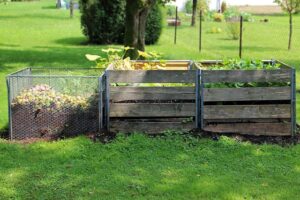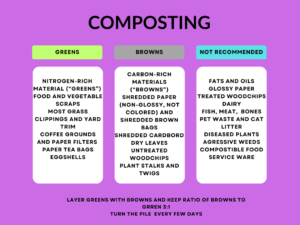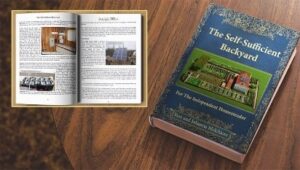Compost Problems

Composting is a natural process that involves the decomposition of organic waste materials, turning them into a rich, nutrient-dense substance known as compost. This substance acts as a soil conditioner, enhancing the fertility and health of garden soil while reducing the need for chemical fertilizers. Not only does composting contribute to sustainable agricultural practices, but it also plays a crucial role in reducing landfill waste, thereby helping to mitigate the impact of waste on the environment. Sometimes though you can have compost problems.
Common Composting Problems
Problem 1: Compost Not Heating Up
This issue often occurs when the compost pile is not receiving sufficient nitrogen or is too dry. Nitrogen is an essential ingredient for microorganisms to break down organic matter effectively. You can solve this by adding nitrogen-rich ‘green’ materials such as vegetable scraps, coffee grounds, or fresh grass clippings to your compost pile. On the other hand, if your compost is too dry, it can slow down the decomposition process. To rectify this, try adding water to the compost pile until it has the consistency of a wrung-out sponge. Ensure your compost pile is kept moist, but not soaking wet, for optimal composting conditions.
Problem 2: Compost Smells Bad
Unpleasant odors emanating from your compost pile is a common issue that many gardeners face. This is often a result of an imbalance in the compost pile. A well-maintained compost pile should have a balanced mixture of green and brown materials, which are sources of nitrogen and carbon respectively.
Causes:
- Excess Nitrogen: A compost pile that is too rich in nitrogen-containing (green) materials, such as kitchen waste or grass clippings, can produce a strong, foul smell. This is due to the excess nitrogen turning into ammonia gas.
- Insufficient Aeration: Lack of oxygen in the compost pile can also cause bad odors. This happens when the pile is too compact or too wet, leading to anaerobic decomposition.
Solutions:
- Balance the Materials: If your compost pile smells bad, try adding more brown materials, like dry leaves or paper, to balance out the nitrogen-rich green materials.
- Turn the Pile: Increase aeration by turning the compost pile every few weeks. This helps to speed up the decomposition process and reduces the chance of foul odors.
- Maintain Moisture Levels: Ensure that your compost pile is not too wet by covering it during heavy rain and adding dry brown materials when necessary.
Problem 3: Pest
It’s not uncommon to find pests in your compost pile as it can provide an attractive food source and habitat for various critters. However, a pest-infested compost pile can lead to several problems, such as the spread of diseases and a slower composting process.
Causes:
- Inadequate Turning and Aeration: If the compost pile is not turned and aerated regularly, it can attract pests. Lack of aeration creates an anaerobic environment, which is conducive for pests.
- Imbalance of Green and Brown Materials: An excess of green materials can lead to a pile that’s too moist or rich in nitrogen, attracting pests.
- Inappropriate Moisture Level: If the compost pile is too wet, it can become a breeding ground for pests like gnats and mosquitoes.
Solutions:
- Regular Turning and Aeration: Regularly turning your compost pile ensures it is well aerated, discouraging pests from making a home in your compost pile.
- Proper Balance of Brown and Green Materials: Maintaining a balanced ratio of brown to green materials helps to prevent the compost pile from becoming too moist or overly rich in nitrogen, which can attract pests.
- Appropriate Moisture Level: Keeping your compost pile as damp as a wrung-out sponge can deter pests and facilitate the composting process.
Best Practices in Composting
By following these best practices, you can ensure a successful and efficient composting process:
- Composting Materials: Use a mix of green waste (like vegetable scraps) and brown waste (like dried leaves). This will provide the necessary nitrogen and carbon for the composting process.
- Size of Materials: Chop or shred your compost materials into small pieces to speed up the decomposition process.
- Layering: Start with a layer of browns at the bottom of the compost pile, followed by a layer of greens. Sprinkle a little soil or finished compost between each layer to introduce beneficial microorganisms.
- Turning the Compost Pile: Turn the compost pile every few weeks with a pitchfork or shovel. This helps to aerate the pile and speeds up the composting process.
- Watering: Keep the compost pile as damp as a wrung-out sponge. Add water if the pile is too dry, but avoid overwatering which can lead to a soggy pile that decomposes slowly.
- Location: Place your compost pile or bin in a well-drained location that is easily accessible year-round.
Remember, composting is more of an art than a precise science. It may require certain adjustments and fine-tuning based on individual circumstances.
Selecting a Suitable Location for Your Compost Pile
Choosing the right location for your compost pile or bin is crucial for successful composting. The location should ideally be in a well-drained area to prevent waterlogging, which can slow down the composting process. The site should receive partial sunlight, which will help to heat the compost and speed up decomposition. However, avoid placing your compost pile in full sun as it may dry out too quickly. Additionally, the location should be convenient for you to reach with your composting materials, and ideally, it should be close to a water source for ease of maintaining the moisture level of the pile. Lastly, be considerate of your neighbors when selecting a location. While a properly maintained compost pile should not produce unpleasant odors, it’s still best to position it reasonably away from neighboring homes.
Correct Compost Pile Size
The size of your compost pile plays a significant role in the composting process. Ideally, your compost pile should be at least 3 feet high and 3 feet wide. This size is sufficient to generate the heat necessary for the composting process, while also being manageable for turning and maintenance. If the pile is too small, it may not heat up sufficiently, impeding the decomposition process. On the other hand, a pile that is too large can be difficult to manage and may not allow for adequate oxygenation, resulting in slow and inefficient composting. Remember to adjust the size of your compost pile based on the amount of compostable material you have and your composting needs.
Use of Compost Activators
Compost activators can be an excellent addition to your compost pile to speed up the process and improve the quality of the end result. They are substances that contain microorganisms, enzymes, or nutrients that aid in accelerating the decomposition process. These can be natural materials such as manure, garden soil, or finished compost, which introduce beneficial microorganisms to the pile. Store-bought compost activators are also available and often contain nitrogen-rich substances to expedite the composting process. To use an activator, simply sprinkle it into your compost pile as you are adding new material, ensuring even distribution. However, it’s essential to note that while compost activators can be helpful, they are not necessary for successful composting. Maintaining the right balance of greens (nitrogen-rich materials) and browns (carbon-rich materials), proper pile size, and adequate moisture and aeration are more crucial factors for efficient composting.

Conclusion
In conclusion, proper composting is a delicate balancing act that requires careful planning and regular maintenance. By selecting the right location, managing the size of your compost pile, and strategically using compost activators, you can significantly enhance the efficiency of the composting process. Moreover, understanding these factors not only helps in creating rich, fertile compost for your garden but also aids in preventing common problems such as unpleasant odors, pests, and slow decomposition. Remember, good composting practices contribute positively to our environment by reducing waste and enriching the soil naturally. Hence, let’s strive to make more informed composting decisions for a greener and healthier future.
For information on compost pest and how to deal with them click here.

